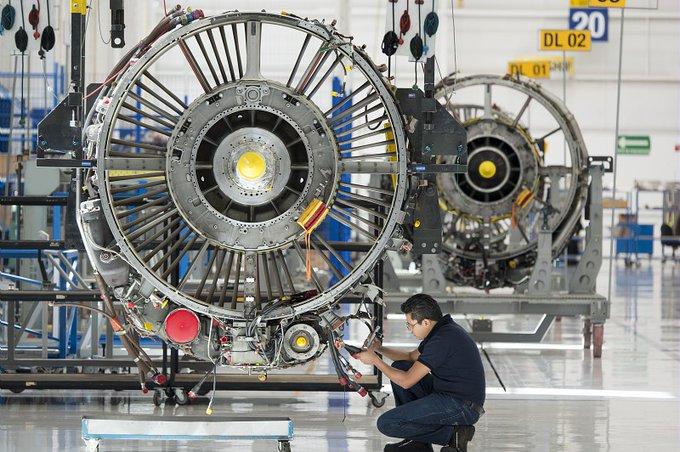
Safran is projecting a 50% decline in commercial engine aftermarket revenues in 2020, but cautions that airline balance sheets, closely linked to air travel demand, will have significant influence on how quickly the lucrative segment recovers.
“It’s going to depend on the financial health of the airlines, how fast they see their own recovery,” Safran CEO Philippe Petitcolin said. “Do they think that they will need engines ... or do they see a very, very slow recovery? In this case, they can swap engines from one airplane to another one and defer a shop visit.”
The COVID-19 pandemic-triggered downturn’s risk to engine services is a marked difference than commercial component work handled by Safran’s Equipment, Defense, and Aerosystems segment, Petitcolin said.
“For systems and equipment, if [airlines] break a part, if they need a part, they need it right away. So as soon as the traffic recovers, the business for services in systems and equipment will recover very fast,” he said. “In terms of engines, this is a different story.”
Safran saw its civil engine revenues fall 34% in the first half of the year, including a 66% drop in the second quarter (Q2). The company’s propulsion unit generated 62% of its €4.0 billion ($4.7 billion) in first-half revenue from services, including both civil and military work.
The slow recovery for narrowbody flying, by far Safran’s largest exposure due to its 50-50 partnership with GE Aviation in CFM International, will help engine cycles increase in the second half of the year, the company projects.
Petitcolin is confident that CFM’s place on key narrowbody fleets, including many still-young, previous-generation Airbus A320s and Boeing 737s as well as the newest variants, the A320neo family and the 737 MAX, will help its aftermarket business recover more quickly than the market as a whole. The latest IATA projections see global airline traffic reaching 2019 levels in 2024 or later. In the meantime, airlines will be right-sizing their fleet to match lower demand.
“You will have to fly the current-generation of airplane a lot more because most of the airlines have decided to clean their fleet, meaning that the old airplanes will retire faster than what we were expecting even last year,” Petitcolin said. “Based on that, I believe that the airplanes which are flying with our engines, the CFM second-generation, and tomorrow, the LEAP, will fly more [and] will go back to service faster.”
CFM has about 24,000 later-generation CFM56s and LEAPs in service, 85% of which have seen either zero or one full shop visit, the company said.
Airlines have been scrambling to cut costs and ride out the COVID-19 pandemic and the related slump in demand. IATA’s latest projection sees global revenue passenger kilometers down 63% for the second half of 2020 compared to 2019. While maintenance spend has been affected, including a decline in engine shop-visit volume, Petitcolin said that Safran has not seen a notable decline in per-shop-visit scope, including the value of materials consumed during an overhaul.
“It does not mean it’s not going to happen. If you remember 2010 [following the Great Recession], it happened. It is quite early in the process because we are just starting to receive new engines for shop visits for [the third quarter] ... So it’s too early to tell,” Petitcolin said.





